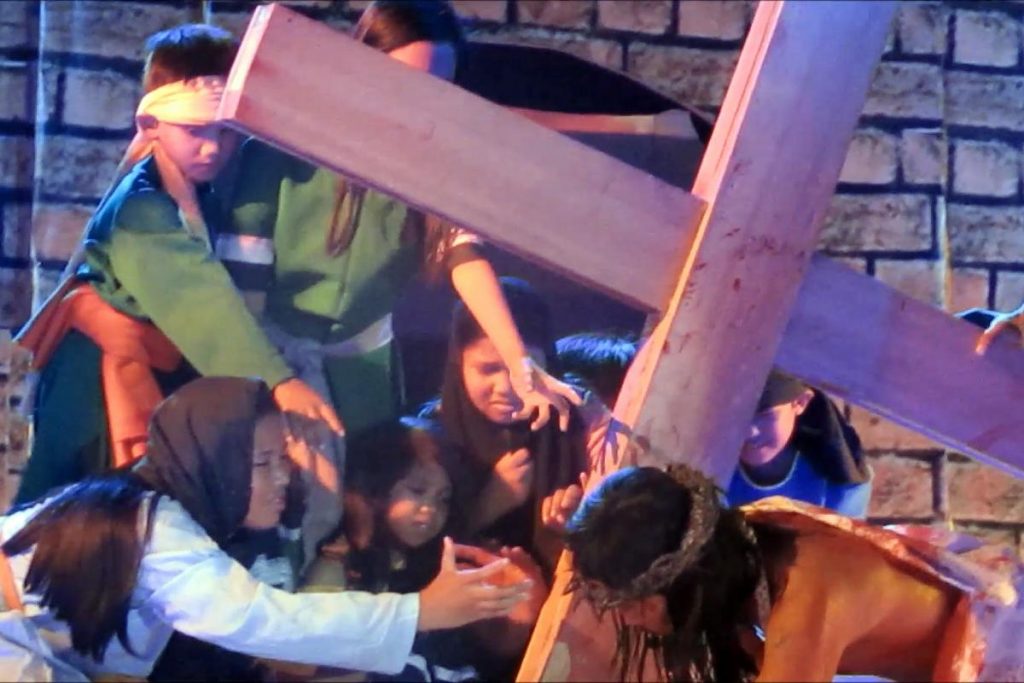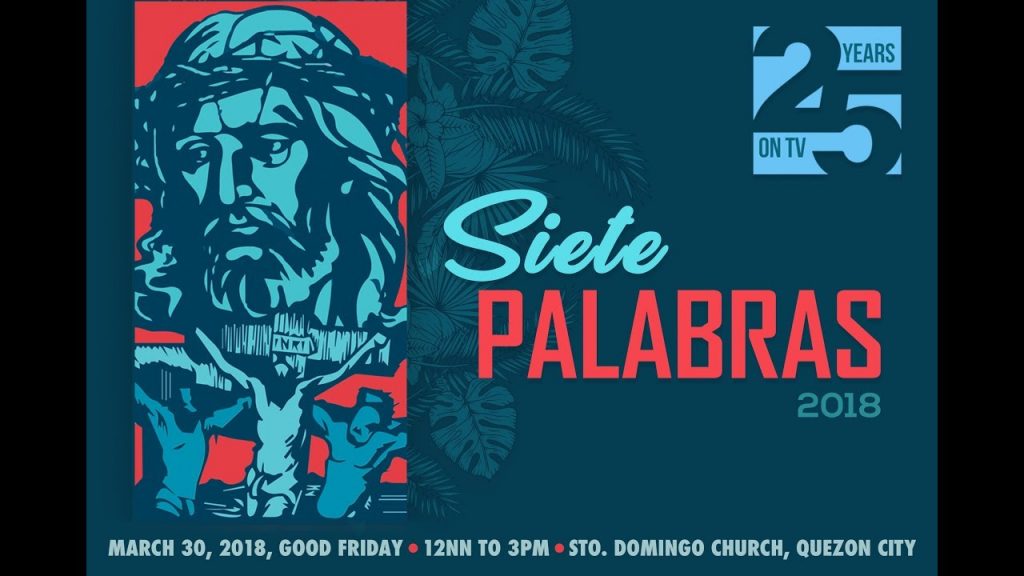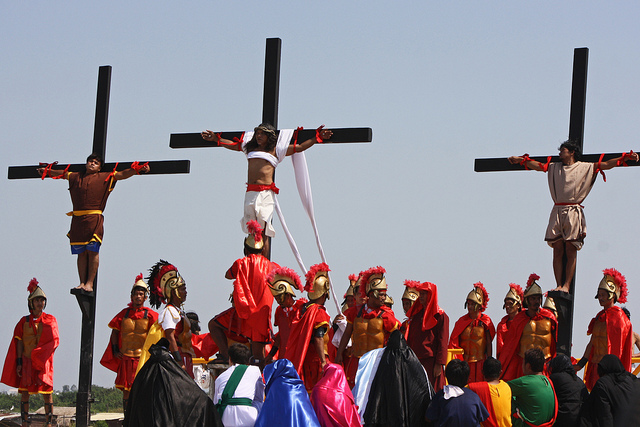LIST: 4 Unique Holy Week Traditions in the Philippines
Updated as of April 12, 2022
One of the most important seasons is the Holy Week for many religious Filipinos. It is composed of Palm Sunday, Holy Monday, Holy Tuesday, Holy Wednesday, Maundy Thursday, Good Friday, Black Saturday, and Easter Sunday. In the Philippines, Maundy Thursday and Good Friday are regular national holidays. Unfortunately, this year’s holy week will be another set of “penitensya” for many Filipinos because of the National Capital Region (NCR) and nearby provinces went back to lockdown due to the ongoing COVID-19 pandemic. So we’re here to give you a a little throwback of what it’s like to celebrate Lenten season here in the Philippines.
Many of our devout countrymen will follow certain traditions this Holy Week. Here are some of them:
Senakulo
 IMAGE from catholicsandcultures.org
IMAGE from catholicsandcultures.org
Done during several nights on Holy Week is senakulo, or Passion Play, a stage or street play about the life of Jesus leading to his death. The play takes place in many communities and is usually organized by local governments with sponsors and volunteers. The bloodiest reenactment and the most popular is the senakulo in San Pedro Catud, San Fernando, Pampanga.
Siete Palabras
 SCREENSHOT from YouTube
SCREENSHOT from YouTube
The annual siete palabras or the reading of Jesus Christ’s seven last words is a tradition followed during a mass or in dialogues over the radio or television. It is seen by many as a way to reflect on his last brief sayings during the Holy Week. They have been widely used in sermons on Good Friday since the 16th century.
Penitensya
 IMAGE from Wikipedia
IMAGE from Wikipedia
Penance or penitensya is the Filipino practice of self-discipline that is often considered a spiritual act. It’s usually depicted as something that’s severe and done in public. Men and women seeking forgiveness would use leather straps to hit themselves at the back, carry a cross through seven churches, or lie down in a scorching concrete pavement. Some would go further and get crucified on a cross.
Salubong
 IMAGE from Philippine Primer
IMAGE from Philippine Primer
Done before dawn, the salubong (welcome) is a ritual celebration of the Risen Christ. Young women including the tenyeta and the kapitana lead a procession of two statues, Mary in a black veil and the Risen Christ, towards the church. Eventually, they reach the stage usually in front of a church where a mechanism carrying a young girl dressed in white. She is lowered down to take off the black veil in Mary’s statue depicting the Resurrection and the end of Mary’s sorrow.
Also read: Holy Week Tradition in the Philippines
Sources: catholicsandcultures.org, shotroll.com













